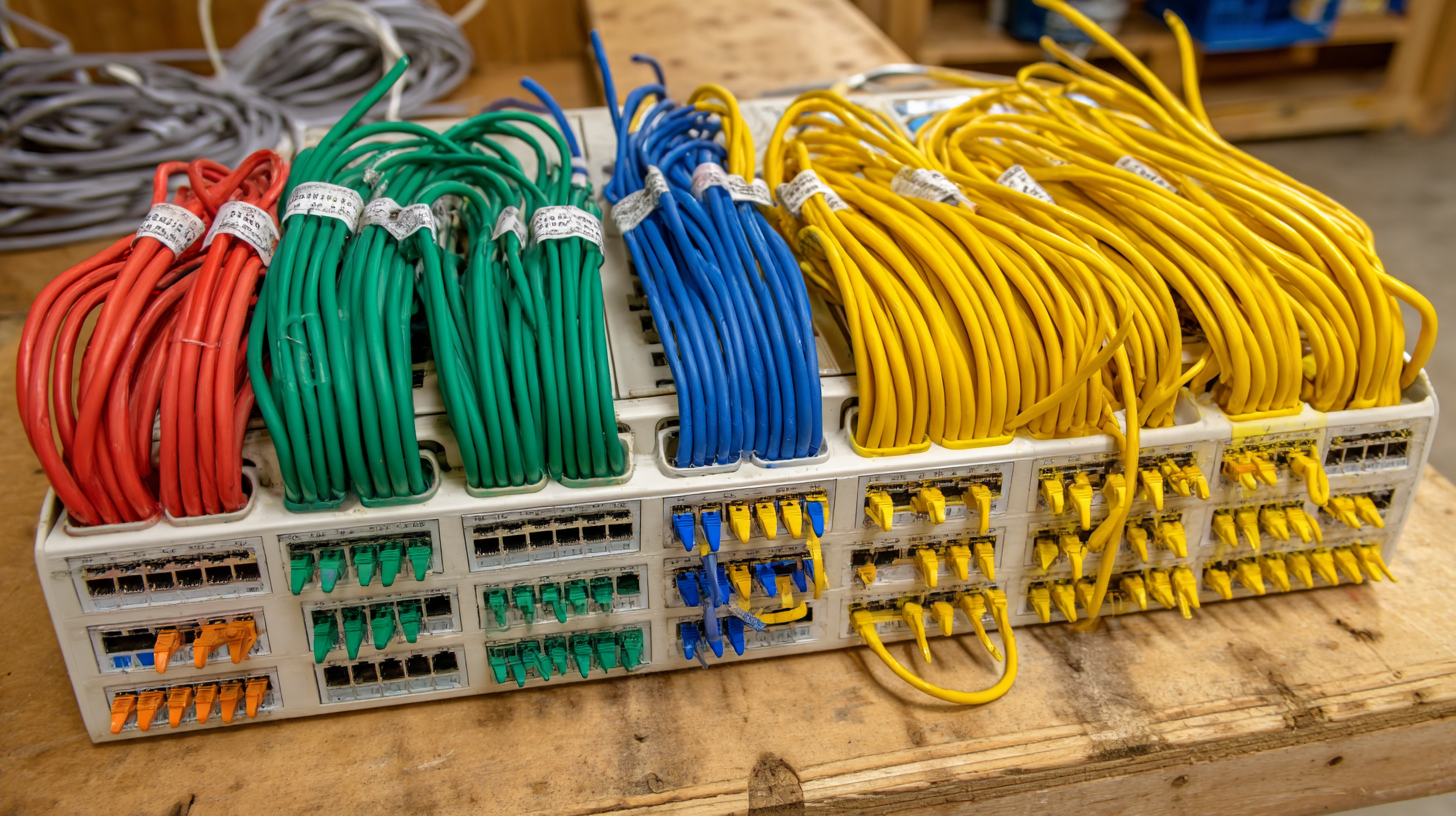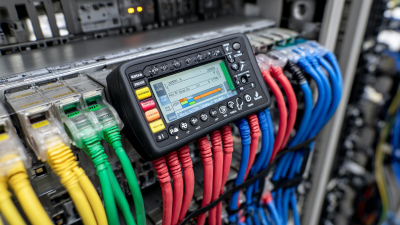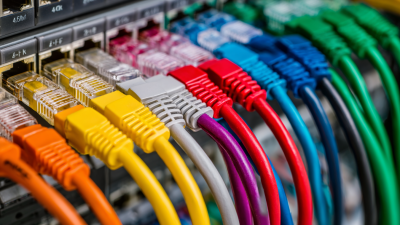Mastering Ethernet Cable Testing: A Comprehensive Guide to Top Tools and Techniques
As the demand for high-speed internet connectivity continues to soar, ensuring the integrity of Ethernet cables has never been more critical in both commercial and residential settings. According to a report from the International Telecommunication Union, the global number of internet users reached 4.9 billion in 2021, a figure projected to grow steadily. This surge underscores the necessity of reliable networking solutions, making the role of an Ethernet cable tester indispensable for technicians and IT professionals alike.
Expert James McCarthy, a renowned figure in the telecommunications sector, emphasizes the significance of proper cable testing: “A reliable connection starts with quality testing; without it, even the best Ethernet cables can underperform.” With a plethora of tools available, mastering the technique of Ethernet cable testing is essential for identifying faults, ensuring compliance with standards, and optimizing network performance. This comprehensive guide aims to introduce the top tools and techniques in the industry, providing professionals with the knowledge needed to excel in cable testing and guarantee optimal network functionality.

Understanding the Importance of Ethernet Cable Testing for Network Reliability
Ethernet cable testing plays a crucial role in ensuring network reliability, as a well-functioning network is vital for both businesses and individuals. According to a report by the Telecommunications Industry Association (TIA), approximately 70% of network failures are attributed to cabling issues. This highlights the importance of rigorous testing protocols throughout the installation and maintenance processes. By identifying problems such as miswiring, cable degradation, or interference early on, organizations can prevent downtime and protect their investment in network infrastructure.
Moreover, the growing reliance on high-speed data transfers has intensified the need for reliable Ethernet connections. A study by MarketsandMarkets predicts that the Ethernet switch market will reach $32.41 billion by 2025, emphasizing the increasing demand for dependable networking solutions. To meet these demands, implementing advanced testing tools—such as fluke testers and cable certifiers—can provide insights into the performance and integrity of Ethernet cables. These tools can measure parameters like attenuation and cross-talk, ensuring that the installed cables meet industry standards and are capable of supporting high-bandwidth applications. Ensuring network reliability through effective Ethernet cable testing not only enhances performance but also fosters long-term confidence in networking systems.
Essential Tools for Efficient Ethernet Cable Testing: An Overview
When it comes to Ethernet cable testing, utilizing the right tools is crucial for ensuring network integrity and performance. According to a recent report by the Ethernet Technology Consortium, improper connections or low-quality cabling can result in a staggering 25% of network downtime. Therefore, investing in essential testing tools can significantly reduce troubleshooting times and improve overall network reliability.
Key tools for efficient Ethernet cable testing include cable testers, network analyzers, and certification testers. Cable testers, such as the Fluke Networks MicroScanner, can quickly identify wiring faults and verify cable performance against industry standards. Network analyzers, on the other hand, provide detailed insight into the network’s health by measuring metrics like bandwidth usage and latency. Certification testers, like the Ideal Networks LanTEK, not only confirm that the installation meets the required specifications but also help in troubleshooting any issues that arise. The combination of these tools not only enhances testing efficiency but also ensures compliance with protocols, reducing the risk of costly downtimes reported by 55% of IT managers in a recent survey conducted by TechTarget.

Techniques for Accurate Ethernet Cable Testing: A Step-by-Step Guide
When it comes to accurate Ethernet cable testing, employing the right techniques is crucial for ensuring reliable network performance. One essential method involves using a cable tester to check for continuity, pin configuration, and any potential faults. This process typically begins with connecting both ends of the Ethernet cable to the tester and running a basic test. A successful test results in lights indicating that each wire is functioning correctly, while any discrepancies point to specific issues that need to be addressed.
Another valuable technique is the use of a network analyzer, which provides more detailed insights into the performance of your Ethernet cable. By analyzing data transmission speeds and identifying any interference, users can ensure their connections are not only functional but optimized for their specific needs. It is important to regularly monitor these metrics, especially in environments with heavy network traffic, to maintain high performance and connectivity reliability. With these methods in hand, technicians can achieve a more thorough understanding of their network infrastructure, ultimately leading to improved efficiency and reduced downtime.

Common Issues Identified through Ethernet Cable Testing and Their Solutions
When it comes to Ethernet cable testing, several common issues can significantly impact network performance. One prevalent problem is cabling errors, which can lead to increased latency and data loss. According to a 2022 report by the International Telecommunication Union, up to 45% of network problems can be traced back to insufficient cabling practices. Proper testing can identify issues such as improper wiring, cross-talk, and inadequate shielding—factors that can severely degrade a network’s efficiency.
Another significant issue is signal attenuation, where the signal loses strength over distance. Research from the IEEE indicates that up to 70% of Ethernet cable installations exceed recommended distance limitations, which can result in weak connections and data transmission errors. Utilizing specialized testing tools, such as cable certifiers and network testers, allows technicians to assess attenuation levels and ensure that installations adhere to established standards. By addressing these common challenges, professionals can optimize their network setups, leading to more reliable and efficient communication infrastructure.
Common Issues Identified through Ethernet Cable Testing
Best Practices for Maintaining and Troubleshooting Ethernet Cables for Longevity
Maintaining the longevity of Ethernet cables is essential for ensuring robust network performance.
To achieve this, regular inspections and proactive measures should be implemented.
First, it is crucial to keep cables away from sources of interference, such as electrical equipment and fluorescent lights, as these can lead to signal degradation.
Additionally, proper cable management can prevent physical damage; using cable organizers and ensuring cables are not tightly bent or twisted will help preserve their integrity.
Troubleshooting Ethernet cables effectively is another key aspect of maintenance. When connectivity issues arise, utilizing a cable tester can quickly identify problems such as breaks or shorts.
Conducting visual inspections for signs of wear, such as fraying or discoloration, should also be a routine practice.
For connectors, ensuring they are firmly seated and free of dust can eliminate many common issues.
By applying these best practices, both maintenance and troubleshooting can contribute significantly to extending the lifespan of Ethernet cables and ensuring optimal network performance.
Related Posts
-

The Ultimate Guide to Understanding Cable Testers and Their Importance in Modern Networking
-

Understanding the Consequences of RJ45 Tester Misconfigurations in Network Performance
-

How to Select the Best RJ45 Cable Tester for Your Networking Needs: A Comprehensive Guide
-

Unlocking Connectivity: The Essential Guide to Choosing the Right Coax Adapters
-

The Ultimate Guide to Choosing the Right Cable Kits for Your DIY Projects
-

Understanding Cable Connectors: Key Types, Their Applications, and Market Trends for 2023






